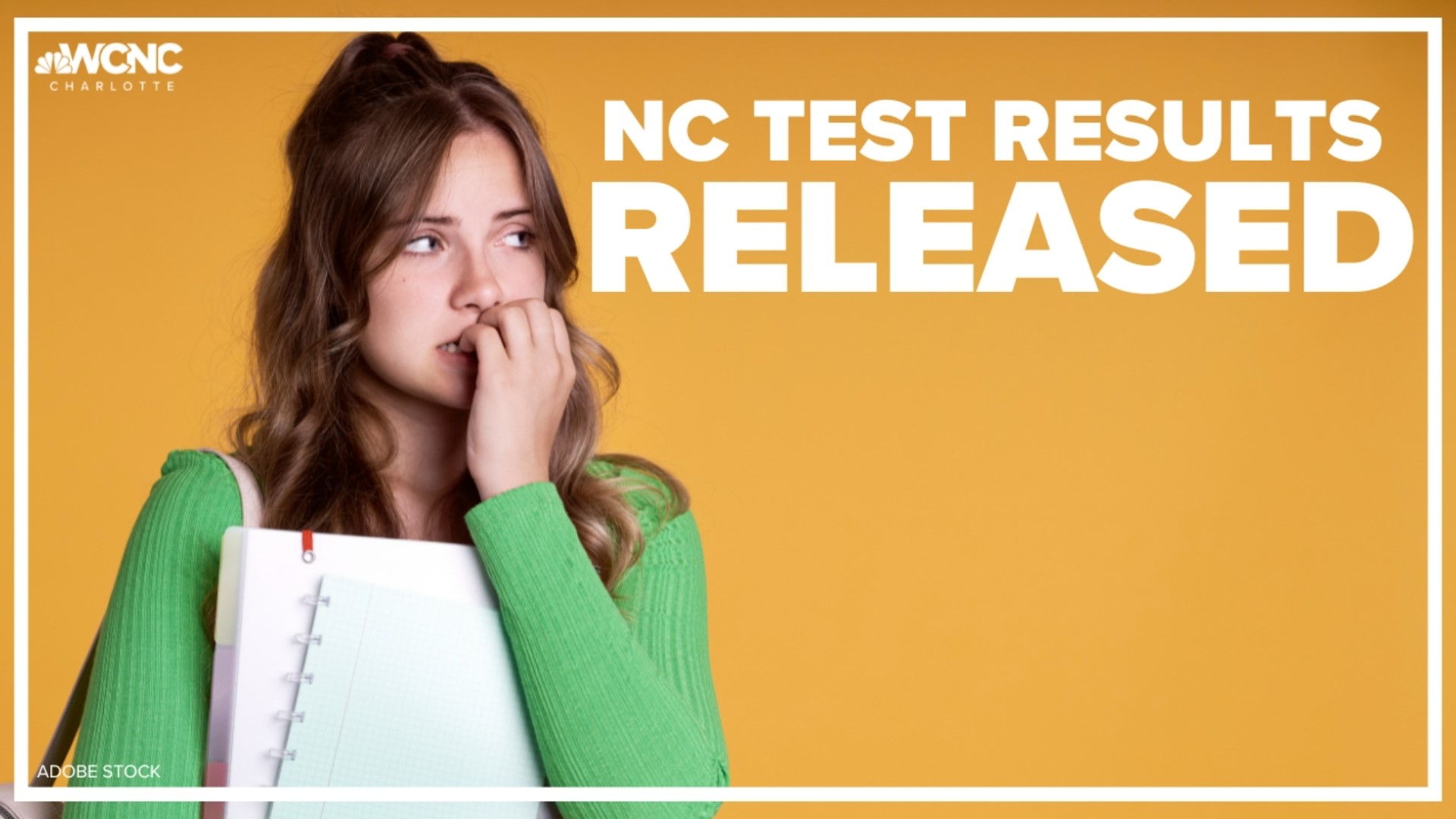CHARLOTTE, N.C. — North Carolina education officials released testing results for each district statewide for the 2021-22 school year Thursday, and the results showed most schools are still feeling the effects of learning loss from the COVID-19 pandemic.
The Department of Public Instruction released full data for each district in the state, including breakdowns by race and other subgroups for every school in North Carolina. State leaders said there was an improvement from the 2020-21 school year, when districts struggled to establish effective teaching habits at the onset of the pandemic.
"Schools resumed face-to-face instruction, and virtual programs continued to be available for students," the report states. "Students and the education community continued to be affected by COVID, particularly when COVID exposures required students to be absent from school or revert to remote learning. These reports must be reviewed within that context, meaning, though instructional delivery was not as varied as in the 2020-21 school year, it continued to be an anomaly in comparison to the 2018-19 school year, which was prior to the onset of the pandemic."
Nearly 400 more schools will be on the state's "low-performing" schools list this fall, according to the data released Thursday. About one in three schools will now be on the list, with 864 total designated under new test scores, up from 488 during the 2018-19 school year, WRAL found.
Schools placed on the low-performing list must draft plans to improve their test results. Schools that have been on the list for two out of the past three testing years will be considered "recurring" or "continually" low-performing. Those schools will be eligible to apply for the Restart program, which gives public schools charter school-like flexibility to change how they operate for the sake of improved academic performance.
The North Carolina General assembly defines low-performing schools as those that receive a school performance grade of D or F and a school growth score of "met expected growth" or "not met expected growth".
Growth is a measurement of how much a student has learned. The NC DPI says it's determined by measuring expected progress against actual progress.
Charlotte-Mecklenburg Schools had 50 schools that met these criteria.
Of the 50 schools listed as low performing 29 met growth, a positive sign for the district.
Low-performing schools with the lowest scores included Newell Elementary, University Park Creative Arts, Ranson Middle, Martin Luther King Jr. Middle, and Druid Hills Academy. Druid Hills Academy was the only district in this group to meet growth expectations.
Low-performing schools that met exceeded growth expectations included Paw Creek Elementary, Reedy Creek Elementary, Gov's Village STEM (Upper), Rama Road Elementary, and Briarwood Academy. Each school received a D school performance score.
"What these data show is that our recovery has begun, the bounce back is taking place," Frank Barnes, CMS's Chief Equity Officer said in response to the newly released numbers.
The 2021 school year data showed across the board most CMS schools saw an increase in student scores and growth compared to the 2020 school year.
Although, like state data, they were woefully short of pre-pandemic scores.
“The recovery, which will be a multi-year recovery, is showing signs that it's happening, even workplaces where the performance was much lower than we want it to be," Barnes said.
State data shows that 22 CMS schools were added to the list of low-performing schools last school year.
However, 14 improved enough to get off that list. One of the schools to do so was Allenbrook Elementary.
The school went from an F to a C grade.
"During the pandemic, you have to be very precise, very intentional align teacher skills with student needs, dig into the curriculum to know exactly what know what is that particular child missing," Kimberly Vaught, Allenbrook's principal said. "And then look at the resources that are available that are researched based on and make sure that teachers have the support from a human capital side."
The district said overall 83% of CMS schools met or exceeded growth in student performance.
“I think we'll see double the gains this coming year as we move forward," Hugh Hattabaugh, CMS's Interim Superintendent said. "So teachers have the coach in the classroom, and they're going to coach the kids up.”
Though school officials say it will likely be years until the district’s test scores are back to pre-pandemic levels.
How state scores are calculated
The state combines all of a school's test scores for 80% of the grade. The state also uses a complex algorithm to determine whether the school demonstrated growth and assigns that score 20% of the grade.
This calculation is set by the General Assembly, according to WRAL. Education officials in North Carolina have suggested the state should consider more factors in forming these grades.
WRAL News contributed to this report.
Wake Up Charlotte To Go is a daily news and weather podcast you can listen to so you can start your day with the team at Wake Up Charlotte.
SUBSCRIBE: Apple Podcasts || Spotify || Stitcher || TuneIn || Google Podcasts
All of WCNC Charlotte's podcasts are free and available for both streaming and download. You can listen now on Android, iPhone, Amazon, and other internet-connected devices. Join us from North Carolina, South Carolina, or on the go anywhere.

